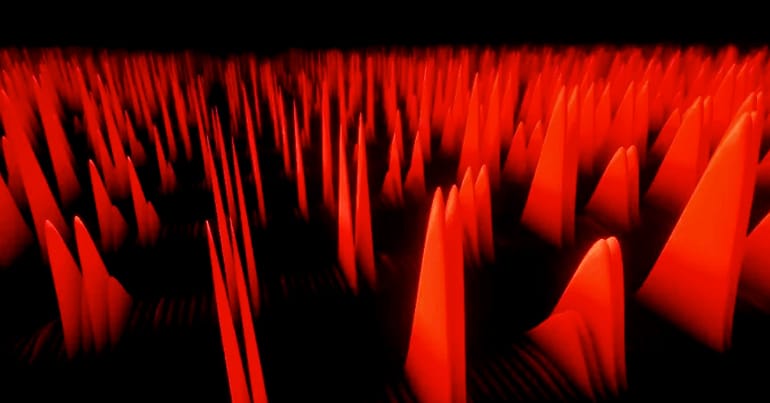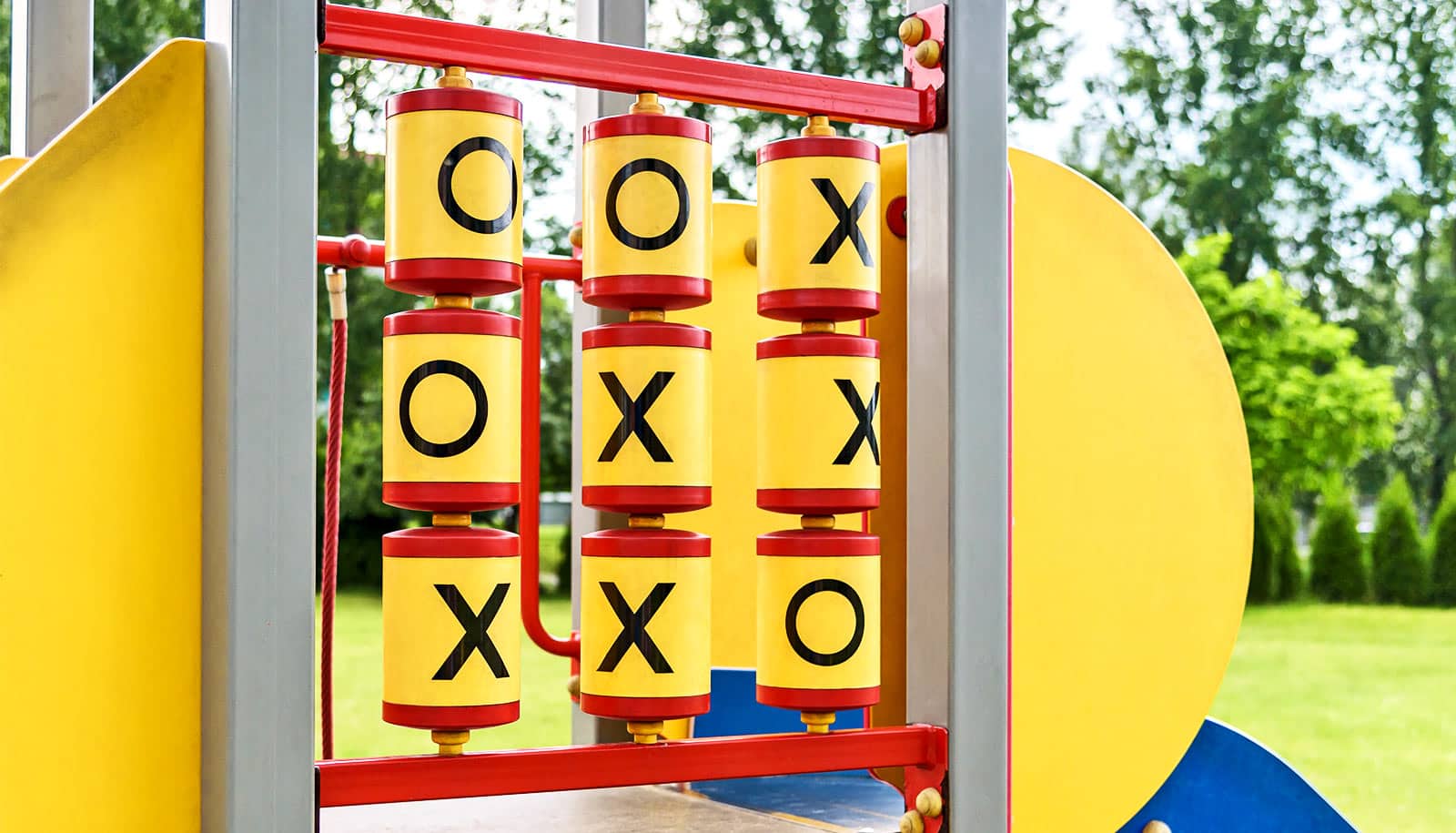Researchers have set a new world record in simulating quantum computing power on a classical computer.
If a quantum computer were a racing car it wouldn’t so much speed past a Formula One, it would simply take a private shortcut to appear at the finishing line just after the starting gun fires. And if you walked over to look under the hood to see how it worked, the engine would promptly collapse to just one random component, like a sparkplug.
This is the weirdness of the quantum world where the normal laws of physics at the atomic level become, as Einstein put it, “spooky.”
A quantum computer exploits quantum physics to rapidly uncover the right answer to a problem by sifting through and adjusting probabilities, while a classical computer will be burning up memory and time looking at each potential answer in turn.
But, in new research physicists show there’s plenty of life yet in classical computers, demonstrating more quantum data crunching power than any of the existing small-scale quantum computer prototypes.
The quantum leap
The research means scientists have a powerful new simulation tool to capture and understand the quantum state and develop quantum-computing software. Ultimately, it will help us understand and test the sorts of problems an eventually scaled-up quantum computer will be used for, as scientists develop quantum hardware over the next decade or so.
“The capability to simulate quantum algorithms at this level is important to learning how a quantum computer will physically operate, how the software can work, and what sort of problems it can solve,” says Lloyd Hollenberg, who leads the team and is deputy director of the Centre for Quantum Computation and Communication Technology at the University of Melbourne.

Quantum computer prototypes are currently too small to do anything useful that a classical computer can’t already do. But quantum hardware is advancing rapidly, and quantum computers have the potential to be much more powerful in solving certain problems than classical computers because of two quantum oddities—”superposition,” and its even stranger cousin, “entanglement.”
Curious qubits
Classical computers work by programming bits, the most basic form of data. Bits are binary, being either 0 or 1 and are programmed to encode and process data. But in a quantum computer the bits, or qubits, are quantum mechanical objects like atoms.
Quantum states can also be binary and can be put in one of two possibilities, or effectively both at the same time. Quantum superposition means that two qubits can, in a sense, be all four combinations of 0 and 1 at the same time.
That unique data crunching power is further boosted by entanglement, where the state of one qubit when measured mysteriously dictates the state of another qubit.
Simulating qubits and their quantum processes, or “programs”, on a classical computer is a key step in understanding how an eventually scaled up and useful quantum computer will actually work.
The problem is that using conventional techniques to simulate an arbitrary quantum process that is significantly larger than any of the existing quantum prototypes would soon require what Hollenberg describes as “planetary scale” memory on a classical computer.
To get around that, his team gave the simulation a specific mathematical question to solve. By being specific, they didn’t need to simulate the entire quantum state in order to simulate larger-scale quantum computing in action.
A billion laptops
To give you an idea of the huge memory capability of quantum computing, one of the largest prototypes, IBM’s new 50 qubit machine, could in principle simultaneously represent about a million billion number combinations.
To simulate a random quantum state the machine would chew up some 18 petabytes of classical computer memory, or the equivalent of more than a million 16 gigabyte RAM laptops. Researchers at IBM have so far been able to classically simulate 56 qubits in carefully chosen states.
But Hollenberg’s team have gone well beyond that and simulated the output of a 60-qubit machine for which representing the whole quantum space of numbers would have required some 18,000 petabytes, or over a billion laptops—well beyond the largest supercomputer.
“A truly random state of about 50 qubits is pretty much the limit one can simulate at present, but if you consider a quantum computer doing something useful like running an algorithm it is no longer in a random quantum state, but in a very specific one that can take up substantially less memory to simulate,” says Hollenberg.
It would take a classical supercomputer more than the entire life of the universe to crack some of the security codes now in use.
Student Aidan Dang developed and ran the record-breaking simulation by asking it to find the two prime numbers that, when multiplied together, equal the semi-prime number 961,307. A quantum computer would perform this task using 60 qubits running the Quantum Factoring Algorithm mathematician Peter Shor formulated.
This factoring calculation can be done on a laptop, but it is beyond the limit of current quantum computer prototypes to solve. But the team’s simulation was able to solve it as a quantum computer comprising 60 qubits would with just 13.8 terabytes of memory at the Pawsey classical supercomputer in Western Australia.
“The simulation used up almost all our allocated computing time at the Pawsey Supercomputing Centre, but we just made it,” says Dang. “We can now use the results to identify clues as to how the first full scale quantum computers will work.”
Code cracking
The difficulty of factoring semiprime numbers is at the heart of internet security, because using large numbers with many digits make it virtually impossible for classical computers to calculate the factors in order to crack the security key.
It would take a classical supercomputer more than the entire life of the universe to crack some of the security codes now in use, but a large enough quantum computer will theoretically be able to solve such problems.
“The prime factors of 961,307 can be easily found using a regular computer, but as the size of the numbers grows a point will be reached where a large enough quantum computer will be able to outperform any supercomputer,” says Charles Hill, a physicist who is part of the quantum simulator development team.
Prepping for the future
“Our ability to simulate large quantum systems is one of the main capabilities we are bringing to research and teaching in this space,” says Hollenberg. “It will enable us to work on developing and benchmarking quantum computing software and to teach people about how quantum computers work.”
Light could solve one of quantum computing’s big problems
Hollenberg says reliable quantum computers of between 100 and 1000 qubits may have enough power to start solving problems out of reach of classical computers, and are perhaps only 5 to 10 years away.
A full-scale universal quantum computer in the future will be able to solve problems that range from complicated modeling for use in drug development and weather forecasting, to optimizing large systems such as transport systems, and may even extend the bounds of machine learning.
But he says access to quantum computer simulations and prototype machines will be critical in preparing for a quantum computer world.
“We have been developing our quantum computer simulation capability for a number of years and this result comes at an exciting time. As IBM have now reached the 50 qubit mark based on superconductor technology, the capability to simulate quantum algorithms at this level and beyond will be critical to understanding the performance and potential of real machines.
“It means we can start interacting now with industry on what the applications of quantum computing will be, and start training the first generation of quantum programmers,” says Hollenberg.
“The race to build a full-scale quantum computer comprising millions of qubits is a longer-term prospect, and Australia is well placed with its focus on silicon-based hardware that might be scaled up to this level,” says Hollenberg.
“There is naturally a lot of hype around quantum computing and we need to start cutting through in order to educate people about how quantum computers are fundamentally different to conventional computers, learn what problems they can be applied to, and the speed-ups we might achieve.
“Interfacing problems with the logic of a quantum computer requires a completely new mindset and skills. In this early phase, quantum programming is highly problem dependent and requires specialist training,” Hollenberg says.
Speedy electrons may reveal shortcut to quantum computing
“Essentially, academia, government, and industry alike need to be ‘quantum ready’ as the hardware development occurring globally accelerates.”
Source: University of Melbourne



